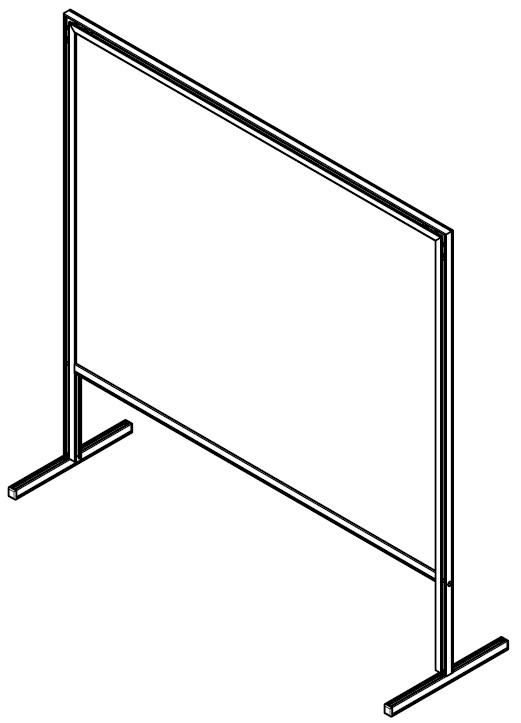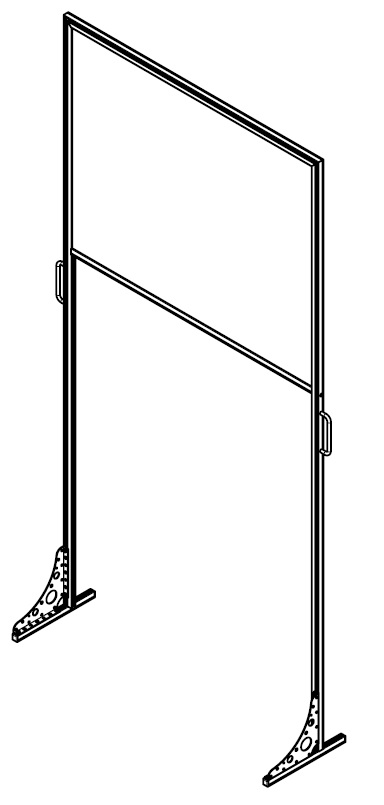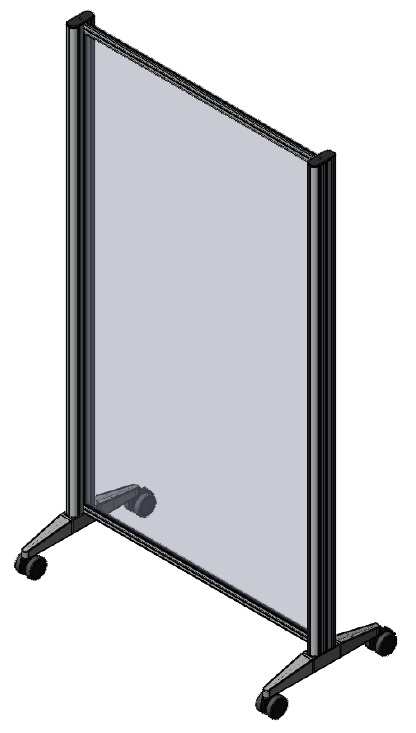What to Look For in a Machine Guard
What to look for in a Machine Guard
(click here to return to Machine Guard Selection Page)
A machine guard always consists of a protective transparent material which is often held in place by a frame. The transparent material is referred to as the shield. The machine guard can be frameless or framed and the shield is almost always made of acrylic or polycarbonate. Occasionally it is made of glass.
The strength of the polycarbonate is particularly critical in industrial and manufacturing environments such as shop floors due to potential stresses and impact of flying debris.
Polycarbonate is also a better choice for mobile units such as machine guards that are not permanently fixed in place and will be moved around due the resiliency of the material.
(click here to return to Machine Guard Selection Page)
What are Machine Guards?
Machine guards were first developed in the late 1950s as clear shields to protect personnel from flying debris from machining operations and contaminants. Currently, as a result of world wide focus on he global COVID-19 pandemic, all business enterprises, both public and private, must work to promote the safety of employees and customers in their environments. Installing machine guards has become critical to shielding against exposure to flying debris.A machine guard always consists of a protective transparent material which is often held in place by a frame. The transparent material is referred to as the shield. The machine guard can be frameless or framed and the shield is almost always made of acrylic or polycarbonate. Occasionally it is made of glass.
How to Choose a Machine Guard?
Material
Machine guard shields can be found in a variety of materials. They are most often made of acrylic or polycarbonate, and sometimes glass. To choose the best material for your space consider the environment and stresses that will be placed on the machine guard. Stresses include the amount of traffic flowing through the area, the types of activities taking place in the area and the frequency with which it might be moved.Acrylic
is commonly used for machine guards. Acrylic is a polymer or plastic that can be made transparent or translucent. It is popular because it is relatively low cost, light weight and can easily be cast into various shapes. Common brands of acrylic include Plexiglas, Lucite and Crylux.Polycarbonate
is also a plastic but is much more resilient (tougher) and crack resistant than acrylic. Polycarbonate is often used for airplane windshields, bullet proof barriers, machine safety guards and other shields requiring shatter and penetration proof protection. Polycarbonate comes in branded versions such as LEXAN®.Which is the best material for your application?
For machine guards that will be placed in high traffic areas such as machine shops, assembly areas and warehouses, and industrial and manufacturing environments, polycarbonate is a better choice due to its durability.The strength of the polycarbonate is particularly critical in industrial and manufacturing environments such as shop floors due to potential stresses and impact of flying debris.
Polycarbonate is also a better choice for mobile units such as machine guards that are not permanently fixed in place and will be moved around due the resiliency of the material.
Construction
Machine guards are made both with and without frames. They can be mounted or free standing.Frameless Guards
They are easier to produce and because they require fewer parts, tend to be less expensive to manufacture. Frameless guards usually come in either a bent or flat format. The “bends” are designed to provide stability and rigidity to the guard. Simple unbent guards are usually screwed or glued directly to a mounting surface.Frameless Guards - Considerations:
Mounting holes in acrylic material can produce cracks and weak spots. This is not the case for polycarbonate machine guards which are virtually impervious to cracking.Thickness matters:
For flat acrylic guards that are mounted with screws, make sure the shield thickness is proportionally thicker as the machine guard becomes wider and/or higher. If the machine guard is too thin, it will be constantly flexing and put pressure on the mounting screws, eventually causing stresses and cracks and possible shattering. This is not the case with polycarbonate, but even with this material, caution should be used to ensure the machine guard is not too thin for the height and width.Screw configuration matters:
When a shield has mounting holes drilled in it, make sure there are large washers used to spread the forces produced by the screw heads to ensure the shield will not quickly develop cracks. The screw heads apply concentrated forces to the local surface and if there are small cracks or scratches in the material produced from the drilling and fabrication process, the concentrated forces can cause stress concentrations that will propagate along the defects in the material. This is especially possible in acrylic as opposed to polycarbonate.
Framed GuardsFramed guards generally have frames made of metal such as stainless steel, copper, zinc, alloys and aluminum. The frames provide the possibility of a wider range of configurations, coverage of larger areas as well as options for both free standing guards or a secure means of mounting a guard to a surface. |
 |
| Desktop Framed Machine Guard can just stand on a desk or counter without modifications to the desk surface |
Framed Guards – Considerations:Durability:Framed guards offer significant protection against breaking and cracking because the load is not concentrated in the plastic part of the machine guard but is generally contained in the metal frame or legs of the guard.Custom or Standard:For odd shaped areas that need protection, multiple frames can often be connected without the need for bending the shield material. Odd shaped or large areas can often be protected by joining a number of standard framed guards.Size:Frames offer the advantage of being able to protect much larger areas with much thinner, and consequently less expensive, shields. For example, a machine guard for a standing worker on an assembly line would have to stand about 6 ft tall. A frameless machine guard would have to be at least ¾” thick to be that tall and remain structurally stable without bending under its own weight. A framed guard can easily be made to cover the full height of the worker or just from the waist up to the head and can be produced from 1/8” to ¼” material. |
 |
| Framed Freestanding Desktop Machine Guard can be used for desktop protection without desktop modification or taking up desk space |
Freestanding and Mounted Machine Guards
Mounted Machine Guards
Require attachment to a desktop or counter or area that is being protected. Mounted guards require drilling or gluing of the guard to a surface. This of course often results in a permanent modification – holes drilled, surfaces modified for gluing, cables suspended from ceilings, etc.Considerations:
Cost:
Mounted machine guards are often less expensive than free standing guards but the installation costs and surface material modifications should be considered in the overall costs.Space:
When a machine guard is mounted on a desktop or countertop, there is often a loss of some space, which may or may not be an issue.
Freestanding Machine GuardsCan be used for desktop or counter protection applications without the need for modifications or installations. Freestanding machine guards often have “legs” that support the guard either on the floor or counter or desktop without the need for mounting modifications.Considerations:Mobility: Moving, modifications and “adjustments” with free standing guards are easier and of less concern.Cost:The cost of the guard is more determinate because the installation is not an issue.Space:With options for locating freestanding guards with legs on the floor, there is no impact to desktop or counter space.Which is the best construction option for your application?For large or odd shaped areas, framed machine guards will provide greater versatility as well as strength.When desk or counter top space is limited, a freestanding machine guard will reduce or eliminate impact to the worktop area |
 |
| Full Height Freestanding Machine Guard can be used in industrial areas or standing work areas | |
| (click here to return to Machine Guard Selection Page) |


